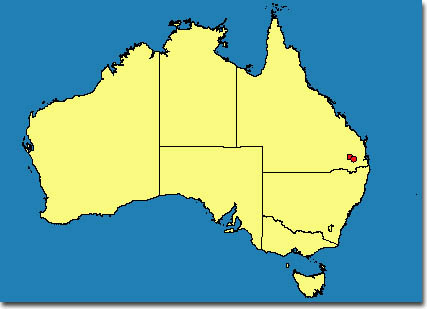 |
 |
||
|
|
|||
| Diagnosis | Encarsia oakeyensis Schmidt & Naumann |
|||||||||||||
| Species group | ||||||||||||||
| Distribution | ||||||||||||||
| Host | ||||||||||||||
| Comments | ||||||||||||||
| Illustrations | ||||||||||||||
| DNA | ||||||||||||||
Encarsia oakeyensis Schmidt & Naumann, 2001. Holotype female Oakey, Queensland, 25.vi.1997 (D.R. Lea) ex T. vaporariorum on Lactuca serriola (ANIC). |
||||||||||||||
Diagnosis |
FemaleColourHead and body yellow except pronotum slightly darkened. Antenna and legs yellow. Fore wing hyaline. MorphologyVertex with densely rugose surface sculpture. Clava 3-segmented. Pedicel longer than F1 (1.25-1.41). F1 about twice as long as wide (2.00-2.12), subequal in length to F2 (0.94-1.07) and slightly shorter than F3 (0.81-0.89). Flagellomers with the following numbers of sensilla: F1:0, F2:0-1, F3:1, F4:2-3, F5:2-3, F6:2. Mid lobe of mesoscutum with 13-14 setae arranged symmetrically, side lobes with 3 setae each. Scutellar sensilla close together, separated by a distance of about their width or less. Distance between anterior pair of scutellar setae smaller than between posterior pair. Fore wing 2.2-2.3 x as long as wide. Marginal fringe very short and only 0.16-0.20 x as long as wing width. Marginal vein anteriorly with 8-9 setae. Tarsus of middle leg 5-segmented. Apical spur of middle tibia subequal in length to basal tarsal segment (0.93-1.04). Tergites laterally with the following numbers of setae: T2:0, T3:1, T4:1, T5:1, T6:2-3, T7:3. T8 with 4 setae. Tergite 7 with 4 setae between cercal plates. Ovipositor 1.16-1.24 x the length of the middle tibia and 2.11-2.12 x as long as clava. Third valvula 0.25-0.28 x as long as the ovipositor. |
|||||||||||||
Species
|
E. strenua-group. |
|||||||||||||
Distribution
|
 Click here for material examined window. |
|||||||||||||
Host |
B. tabaci (Gennadius), T. vaporariorum (Westwood). |
|||||||||||||
Comments |
This species is distinguished from other yellow species of the E. strenua-group by the stout antennae, the short marginal fringe of the fore wing and the densely rugose surface sculpture of the vertex. |
|||||||||||||
Illustrations |
|
|||||||||||||
DNA
|
28S-D2 rDNA: GenBank Accession Code: AY615734. |
|||||||||||||
| © Copyright 2001, CSIRO Australia |
| [webmaster - February 2001] |
| Use of this web site and information available from it is subject to our |
| Legal Notice and Disclaimer |